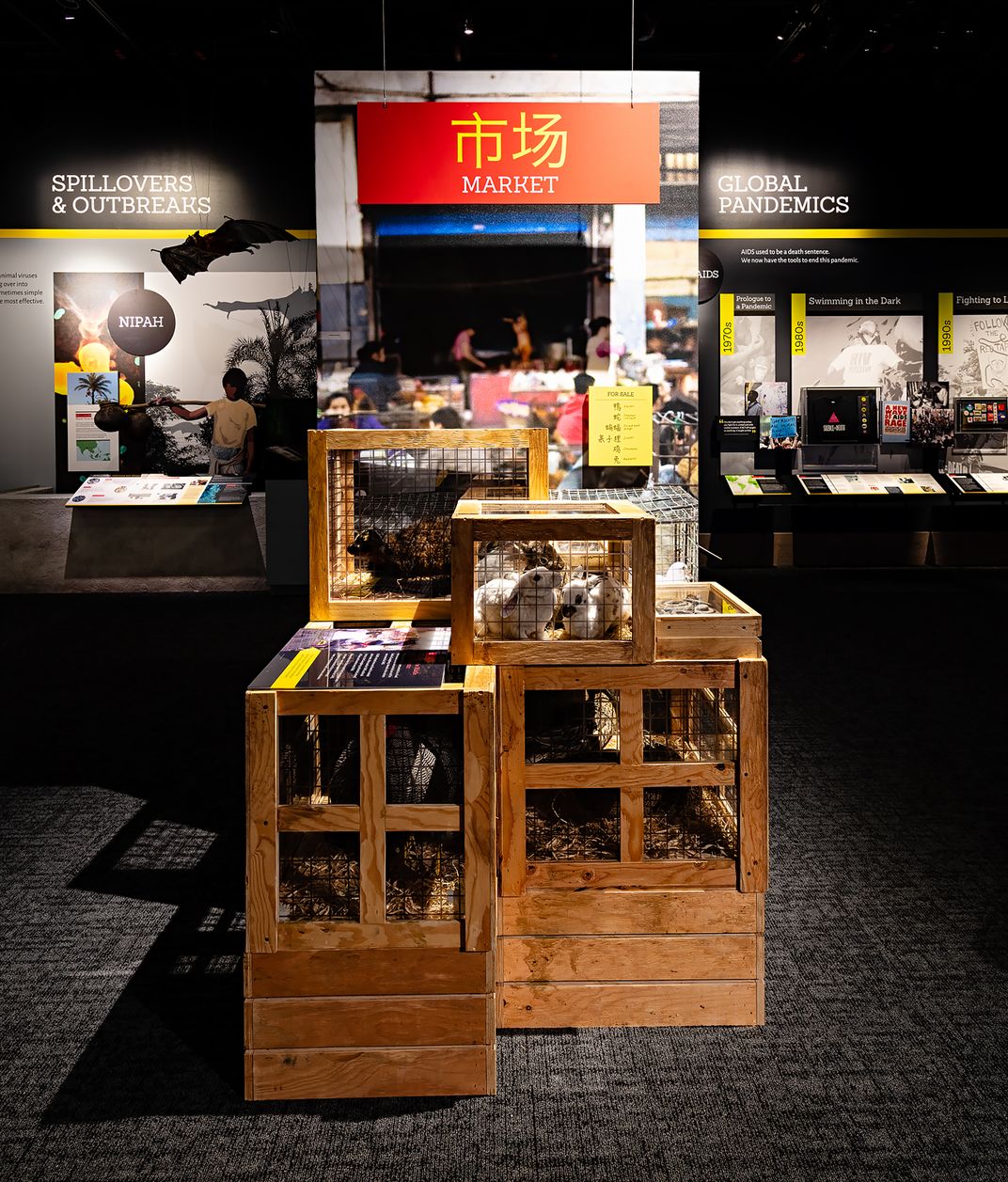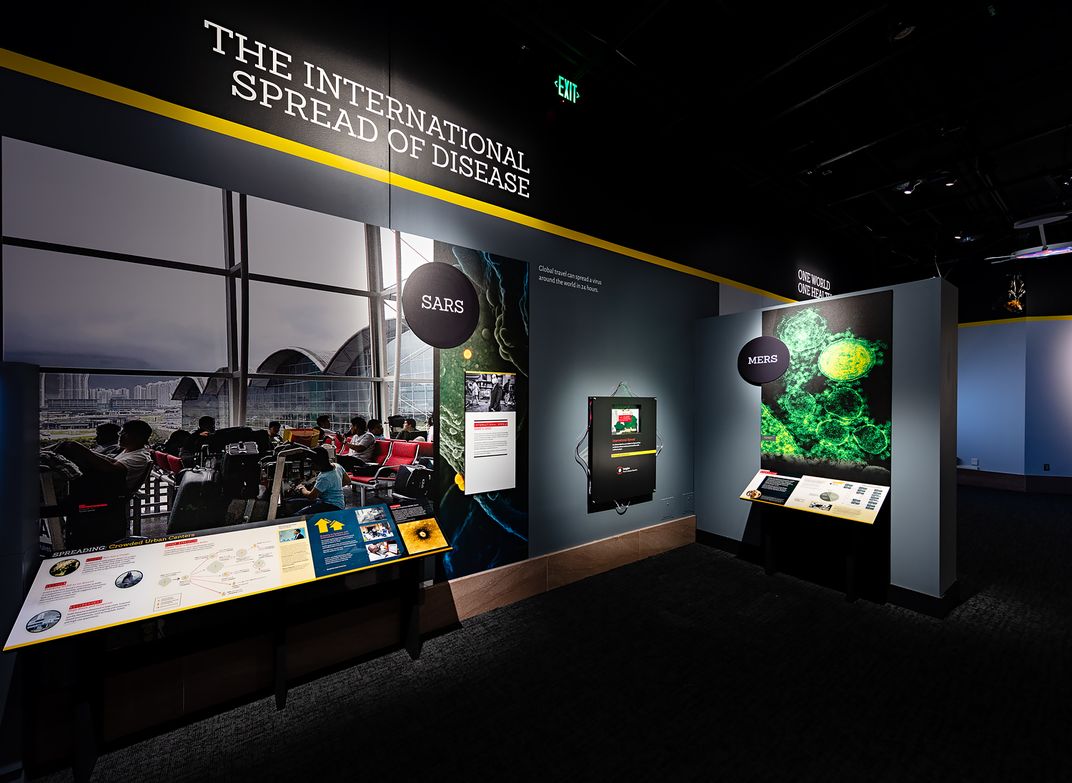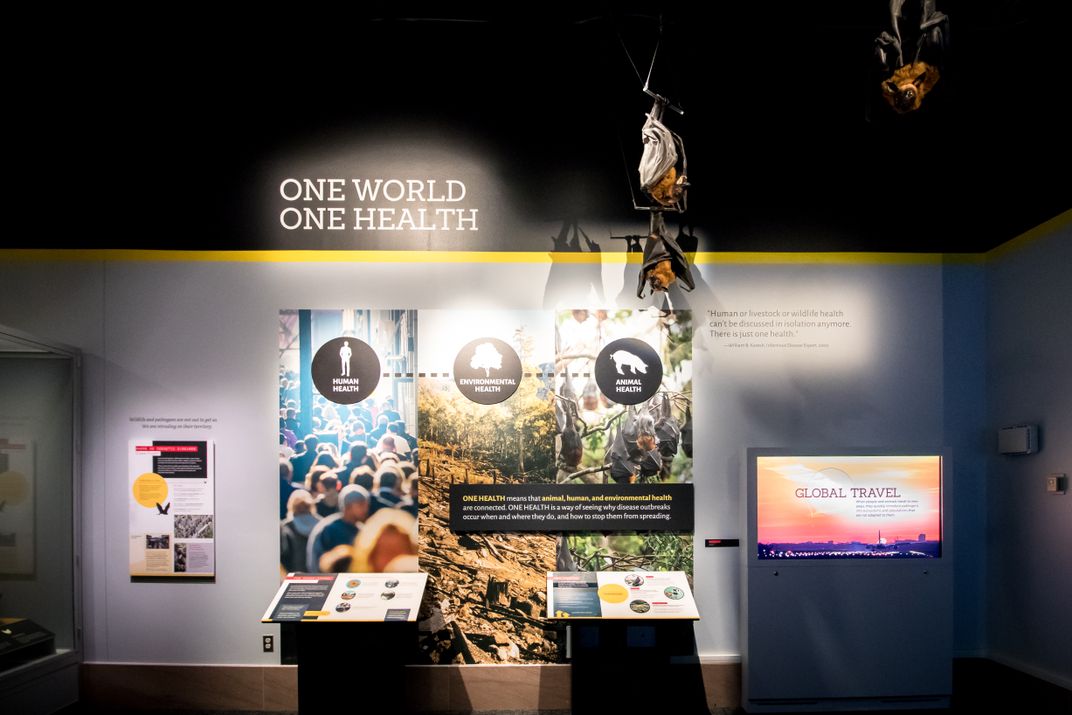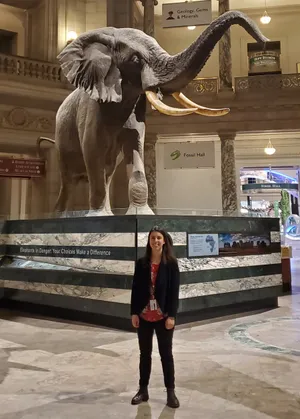NATIONAL MUSEUM OF NATURAL HISTORY
‘One Health’ Could Prevent the Next Coronavirus Outbreak
An exhibition at the Smithsonian’s National Museum of Natural History puts the new coronavirus outbreak into context, showing how and why new viruses emerge and what we can do to stop them from spreading.
/https://tf-cmsv2-smithsonianmag-media.s3.amazonaws.com/blogging/featured/CDC_Coronavirus.jpg)
The death toll from the new coronavirus has topped 1,000 as the virus continues its spread across the world. Fatalities have surpassed those from the other coronavirus outbreaks, SARS and MERS, both of which are featured in the National Museum of Natural History’s exhibition “Outbreak: Epidemics in a Connected World.”
The exhibition puts today’s coronavirus outbreak into context, showing how and why new viruses emerge and what we can do to stop them from spreading. It shows how all health on earth--human, animal and environmental---is connected. As humans continue to disrupt the natural world, we put ourselves at greater risk of outbreaks.
“We are part of nature, part of an ecosystem,” Sabrina Sholts, the exhibition’s curator, said. “No matter where you live. Other animals are all around us. As we change environments and push into new ones, we fail to recognize and respect natural relationships which increases our risks for exposure to new diseases.”
Diseases spill over from animals
Sholts said it’s important to be aware that animals can carry and transmit pathogens - disease-causing organisms - across species. Many viruses that infect humans originate in wildlife, mostly likely including the new coronavirus.
Human activities put us at greater risk. Keeping live animals in markets, for example, is risky because animals that don’t typically come in contact with one another in the wild are kept in close quarters. This allows viruses to jump between species. Scientists think a live animal market helped the coronavirus spread. But they’re not sure about the role it played in animal-to-human or human-to-human transmission.

The past informs the present and future
The new coronavirus is often compared to SARS because they are about 79% similar genetically and cause similar symptoms. But that doesn’t mean the severity of the disease or fatality rate will be the same.
Still, looking to past outbreaks can help determine our response to new diseases. SARS for example, showed us that international communication and cooperation is key to stopping an outbreak from getting worse. The World Health Organization declared that the epidemic had been contained just four months after it was declared a worldwide health threat.

“The global response to SARS is generally considered a success,” Sholts said. “It helped inform how outbreaks like the new coronavirus could be handled moving forward.”
Sholts remains optimistic that global collaboration will continue to grow, pointing to the speed at which China shared information about the new coronavirus with the world.
“It was pretty amazing how quickly the genetic sequence was shared publicly after the initial emergence - it was a matter of days with this virus compared to months with SARS,” Sholts said. “That shows how far we’ve come with our science and communication.”
Earth’s health is our health
Sholts said we can better prevent new diseases from spreading to humans by being more aware of how humans impact the environment.
“Outbreak” emphasizes “One Health,” or the idea that the health of humans, animals and the environment are all intertwined.

As humans develop land, we interact more closely with wildlife and increase the chances of passing disease-causing organisms back and forth. This means that solving world health problems will require communication between professionals in many different fields, including veterinarians, health care workers, engineers and economists.
“In the past, these professions have often been compartmentalized, but “Outbreak” brings people mentally and professionally out of their silos to see the bigger picture,” Sholts said.
Outbreak education
For Sholts, public education is also necessary to prevent outbreaks like the coronavirus. So, she helped create a Do-It-Yourself version of the “Outbreak” exhibition called “Outbreak DIY”. Customizable and multilingual, it shares the same messages as the museum's exhibition, including “One Health,” and has been used in schools, universities and hospitals around the world.
The museum also created an online “Outbreak” platform for those who can’t physically visit an exhibition. The platform will go live this year. Sholts hopes that people will use the knowledge they learned from “Outbreak” or “Outbreak DIY” when responding to news about the new coronavirus.
“Even in the most alarming circumstances, practice logic and make evidence-based decisions,” she said. “Panic is unhelpful - if not harmful - when unwarranted.”
Related stories:
Can Scientists Stop One of the World's Deadliest Mosquitoes?
Meet the People Leading the Fight Against Pandemics
New Smithsonian Exhibit Spotlights 'One Health' to Reduce Pandemic Risks
This Earth Day, The Planet's Health is Your Health

